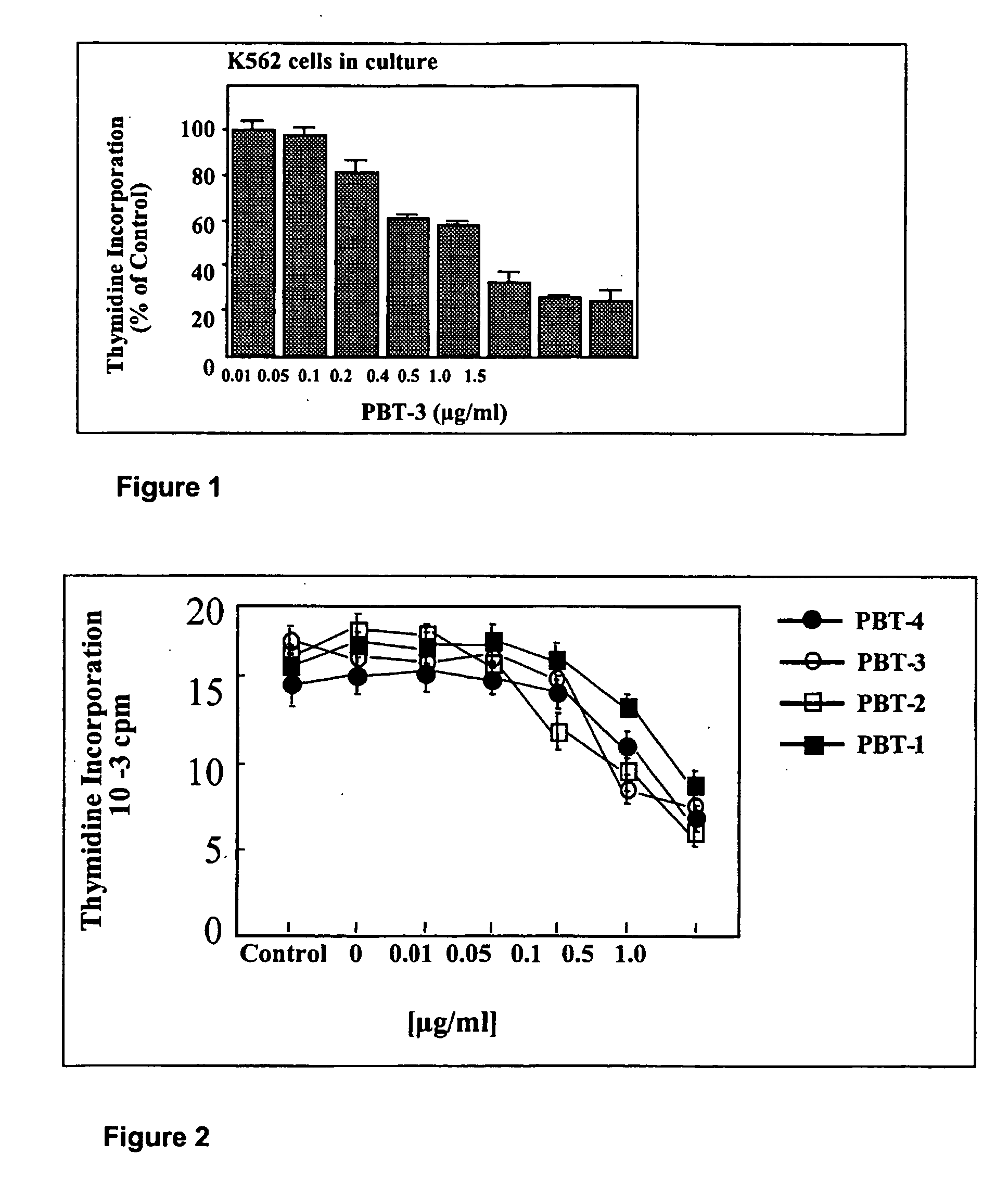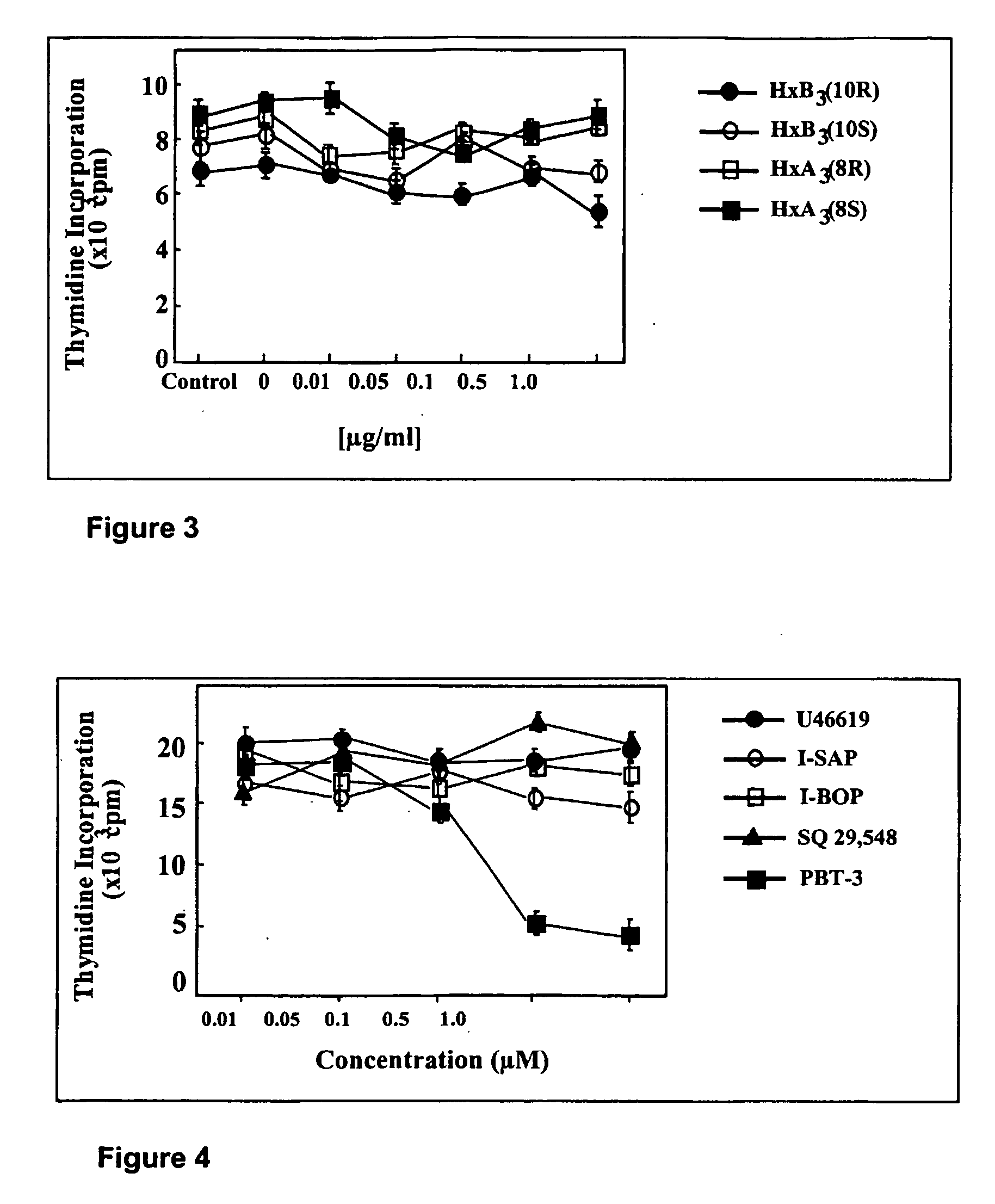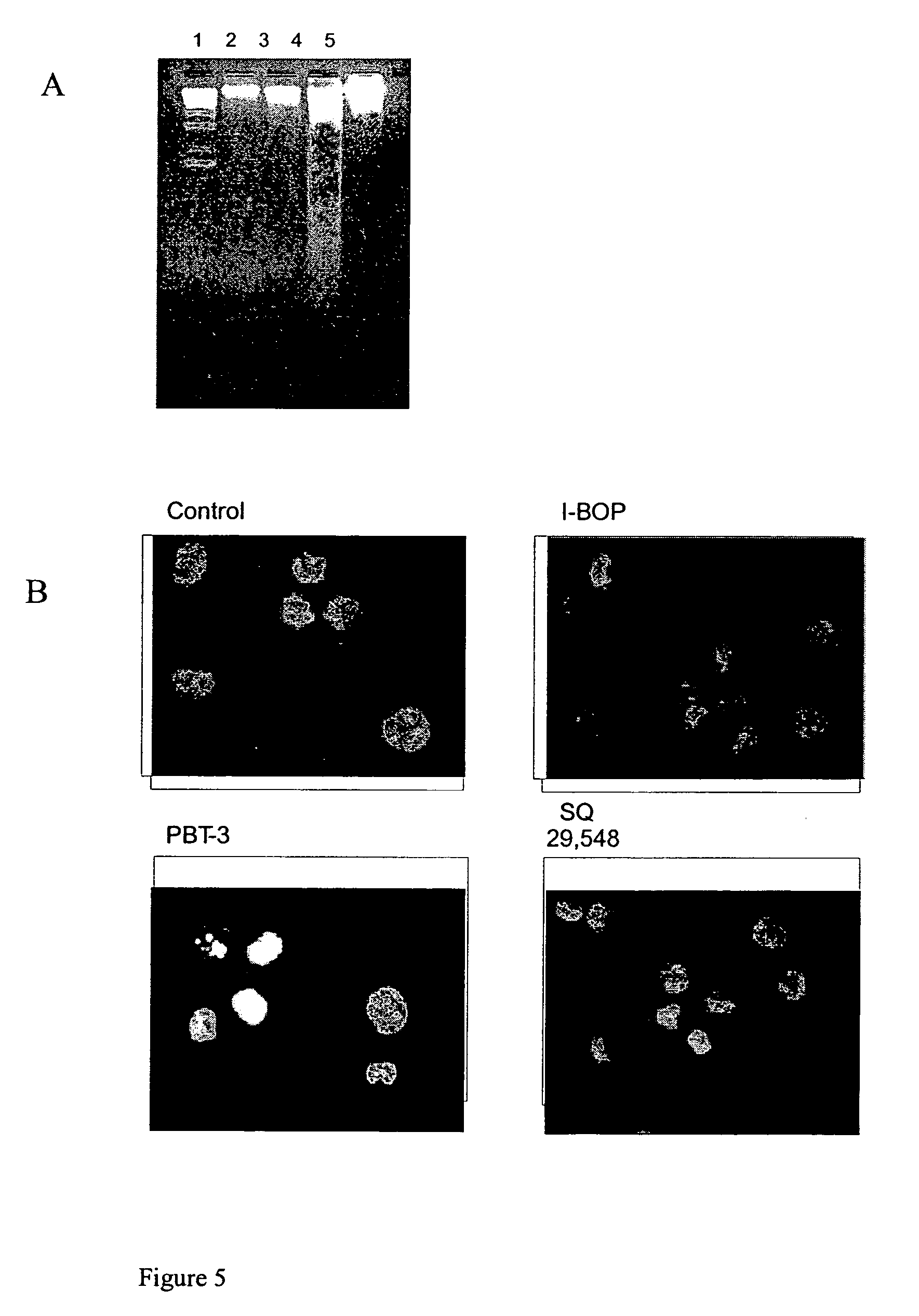Compositions comprising hepoxilin analogs and their use in the treatment of cancer
a technology of hepoxilin and analogs, which is applied in the direction of drug compositions, biocides, and elcosanoid active ingredients, can solve the problems of poor prognosis, serious cml disease, and uncontrolled proliferation of stem cells in bone marrow
- Summary
- Abstract
- Description
- Claims
- Application Information
AI Technical Summary
Benefits of technology
Problems solved by technology
Method used
Image
Examples
example 1
[0205] The effect of hepoxilin analogs on leukemia cells was examined using the CML K562 cell line. This cell line was derived from a human CML patient and is an accepted model of human chronic leukemia. The K562 cell line expresses the bcr / abl protein (Lozzio & Lozzio, 1975). It is relatively resistant to apoptosis (Martin et al., 1990), but ST1571 and other agents appear to control cell growth for a while before the cells overcome the drug effect (Weisberg & Griffin, 2000).
[0206] The effect of various doses of the hepoxilin analog PBT-3 on growth of K562 cells was first examined. As seen in FIG. 1, PBT-3 inhibited growth of K562 cells, as measured by 3H thymidine incorporation, with a maximum effect at 1 μg / ml PBT-3.
[0207]FIG. 2 shows that all four analogs examined, PBT-1, PBT-2, PBT-3 and PBT-4, gave similar dose response effects in inhibiting K562 cell growth.
[0208] The effect of native hepoxilins was also examined. FIG. 3 shows that native hepoxilins did not inhibit K562 cel...
example 2
Apoptotic Effect of PBT-3 on K562 Cells
[0210] Studies were carried out to determine if PBT-3 affected apoptosis in K562 CML cells. Cells were cultured for 24 or 72 hours in the presence of growth medium (control) or PBT-3 (2.8 μM). Apoptosis was examined by DNA laddering. Cultures were harvested, DNA was extracted with DNeasy (Qiagen) and samples were loaded on a 2% agarose gel containing 0.2 μg / ml ethidium bromide. A λ BstII DNA digest with DNA fragments of known size was used as a reference marker. After electrophoresis at 25V for 5 h, gels were photographed under trans-UV illumination. A typical gel is shown in FIG. 5, Panel A.
[0211] These results demonstrate that PBT-3 causes DNA fragmentation associated with apoptosis within a 24 hour to 72 hour period.
[0212] Nuclear fragmentation was assessed by direct microscopy of treated cells stained with Hoechst 33342 dye. After culture with PBT-3, I—BOP or STI571, cells were suspended with 5 μg / ml of dye for 10 min. at 23° C.; then wa...
example 3
Effect of PBT-3 on Akt Expression
[0217] The effect of PBT-3 on Akt expression in K562 cells was examined as described above.
[0218]FIG. 11 shows a Western blot showing that STI-571 blocked the expression of the Bcl pathway (Bcl-XL), while PBT-3 was essentially inactive on this pathway. On the other hand, PBT-3 blocked phosphorylation of Akt, while STI-571 increased it. These results suggest that both compounds (PBT-3 and STI-571) may be useful as complementary medicines to block expression of the two separate pathways (Akt and Bcl) in leukemia.
PUM
| Property | Measurement | Unit |
|---|---|---|
| temperature | aaaaa | aaaaa |
| pharmaceutical composition | aaaaa | aaaaa |
| resistance | aaaaa | aaaaa |
Abstract
Description
Claims
Application Information
 Login to View More
Login to View More - R&D
- Intellectual Property
- Life Sciences
- Materials
- Tech Scout
- Unparalleled Data Quality
- Higher Quality Content
- 60% Fewer Hallucinations
Browse by: Latest US Patents, China's latest patents, Technical Efficacy Thesaurus, Application Domain, Technology Topic, Popular Technical Reports.
© 2025 PatSnap. All rights reserved.Legal|Privacy policy|Modern Slavery Act Transparency Statement|Sitemap|About US| Contact US: help@patsnap.com



